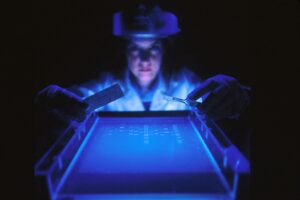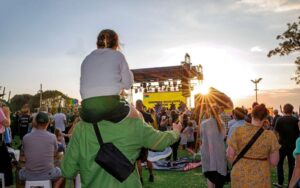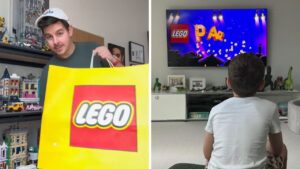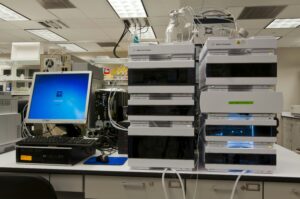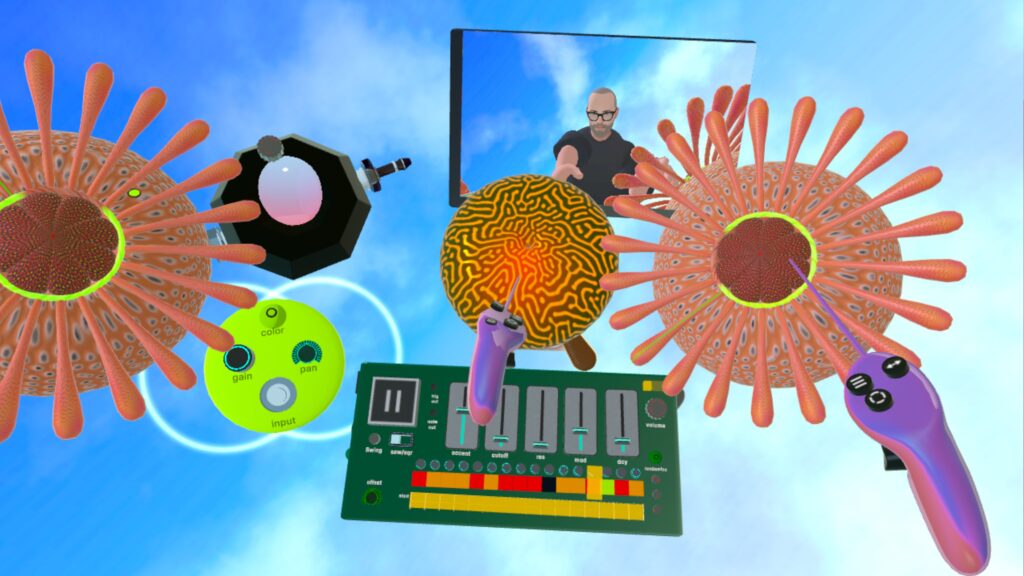
OCULUS_ATTRIBUTION_ID:000000000000-3715150718552632-
As modern musicians, the range of creative tools at our disposal is vast. From traditional instruments to cutting-edge digital setups, the possibilities are nearly endless. Yet, in this sea of options, Virtual Reality (VR) is emerging as a groundbreaking platform for music creation. Over the past eighteen months, I’ve delved into the world of VR music-making, and the experience has been nothing short of transformative.
VR offers an immersive and versatile environment for musicians, but it also comes with its own set of challenges. The technology relies heavily on hardware from major corporations, and the bulky headsets can be off-putting for some. However, once these hurdles are overcome, the potential of VR in music production becomes evident. Despite its initial disorientation and the slightly dystopian feel, creating music in VR is unlike anything I’ve experienced before.
The VR Music Landscape
Before diving into the specifics of VR music creation, it’s important to understand the different realities involved. VR, or Virtual Reality, places you in a fully immersive virtual space. Augmented Reality (AR) allows you to see the real world with virtual elements superimposed, while eXpanded Reality (XR) encompasses both VR and AR. For the purpose of this exploration, we’ll focus on VR, as it is the most commonly used term in this context.
Imagine wearing a VR headset and being surrounded by a virtual landscape of your own design. With a controller in each hand, you manipulate a synthesizer and sampler setup floating in space around you. Alternatively, you might use hand tracking to interact with on-screen controls connected to a computer running software like Ableton Live or Logic Pro. The Meta Quest 3 headset, combined with the Patchworld VR app, allows for these and other scenarios, offering a range of ‘realities’ to explore.
My Journey with Patchworld
Initially, my interest in VR was piqued by its potential for gaming. However, the Meta Quest 3, with its full-color passthrough capabilities, opened up new possibilities for music creation. Patchworld, a VR app that combines modular synthesis and sampling with visual elements, caught my attention. As a musician, photographer, and former VJ, the integration of music and visuals was particularly appealing to me.
Patchworld offers a suite of audio and visual tools, from synths and samplers to modular synth-style elements called blocks. Users can import audio samples, images, GIFs, and short videos, creating projects with rich visual components. The ability to tag items as ‘Hide In Play Mode’ allows for complex setups that remain visually clean during performance.
“With Patchworld, it’s best to jump in and start playing as soon as possible, you don’t need to wait until you’ve ‘studied’ it, or watched enough tutorials.”
My first project with Patchworld involved a 303-type sequencer, samplers, a filter effect, and a virtual speaker. Using the Quest controllers, I recorded the session with the headset’s native recording feature, capturing both video and audio. The results were rough but promising, illustrating the potential of VR for music creation.
Beyond the Studio: Real-World Integration
One of the most exciting aspects of VR music-making is the ability to incorporate real-world environments into projects. By using 360º photos or recording live performances in various locations, musicians can create unique soundscapes that blend virtual and physical spaces. This approach allows for creative exploration beyond the confines of a traditional studio.
Patchworld can also be integrated into a MIDI studio setup, interfacing with computers and hardware wirelessly. While latency can be an issue, the ability to send MIDI from Patchworld to software like Ableton Live or Logic Pro expands the creative possibilities.
The Future of VR Music Creation
As VR technology continues to evolve, the potential for music creation will only grow. While the current landscape is dominated by companies like Meta and Apple, the entry of new developers could foster healthy competition and innovation. For now, the Meta Quest 3 remains a cost-effective option for those looking to explore VR music-making.
Despite the challenges, VR offers a unique and stimulating alternative to conventional music production. It allows musicians to merge their visual and auditory creativity, opening up new dimensions of expression. As the technology advances, it may become an integral part of the music creation process, complementing traditional setups rather than replacing them.
Ultimately, VR music-making is about embracing new possibilities and pushing the boundaries of creativity. Whether you’re a seasoned musician or a curious newcomer, the world of VR offers a fresh and exciting frontier to explore.
